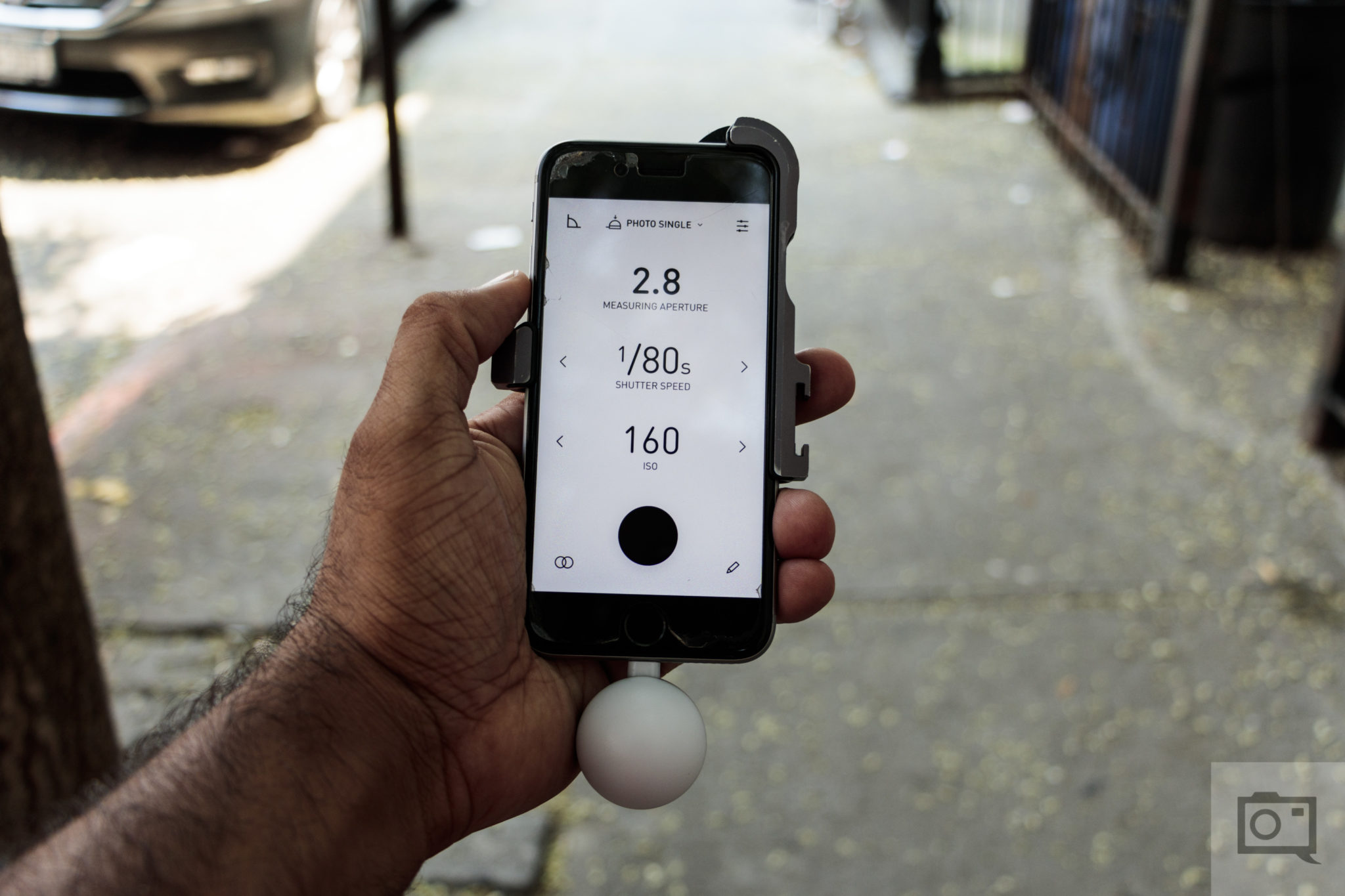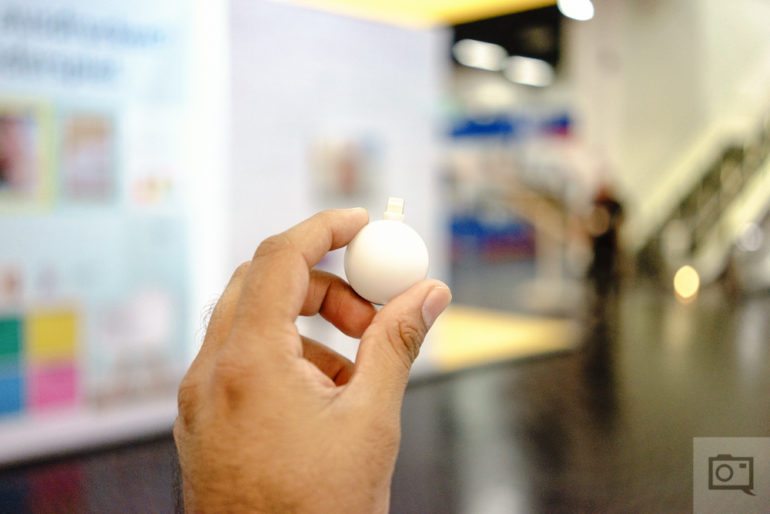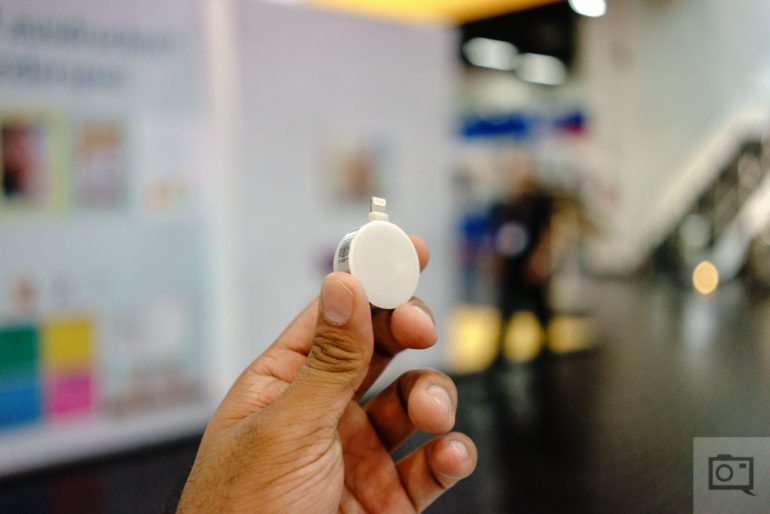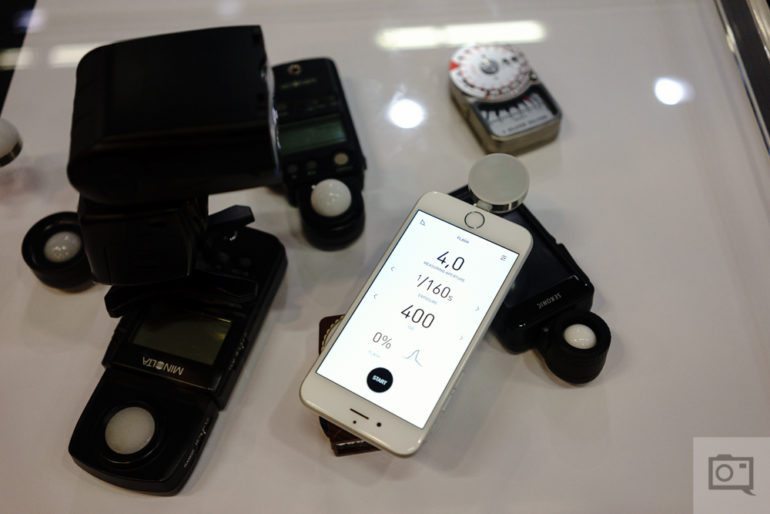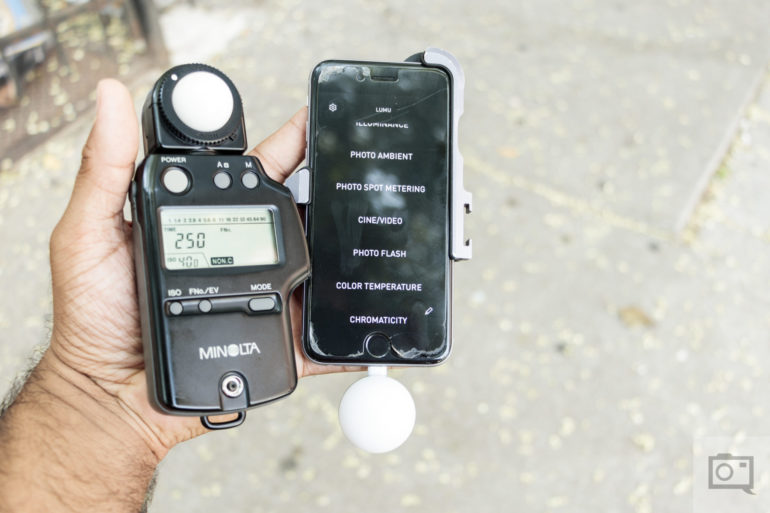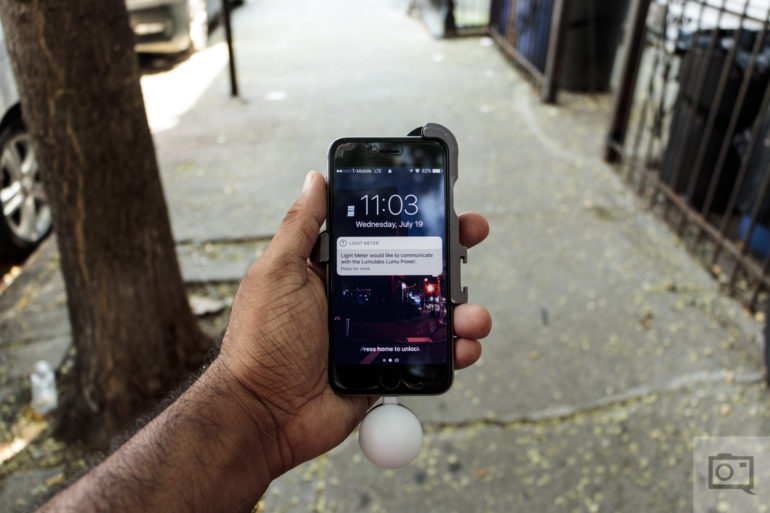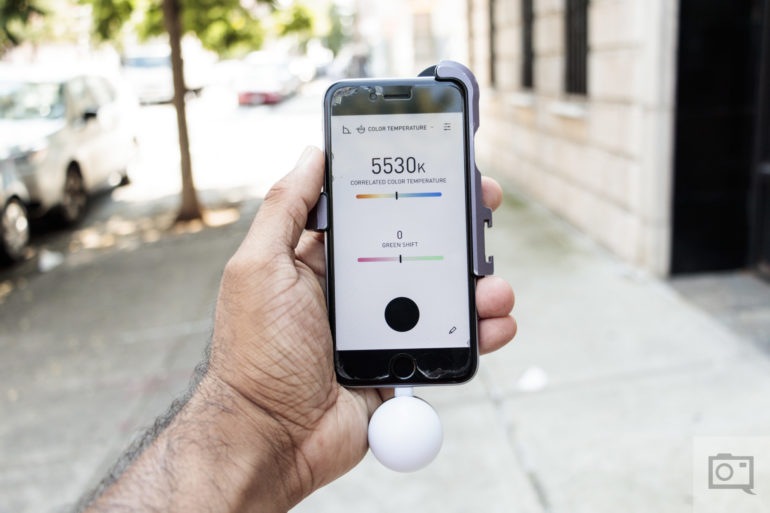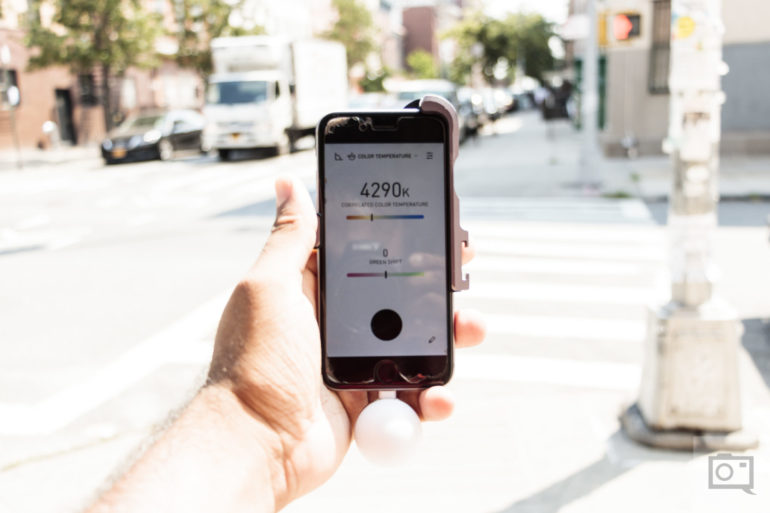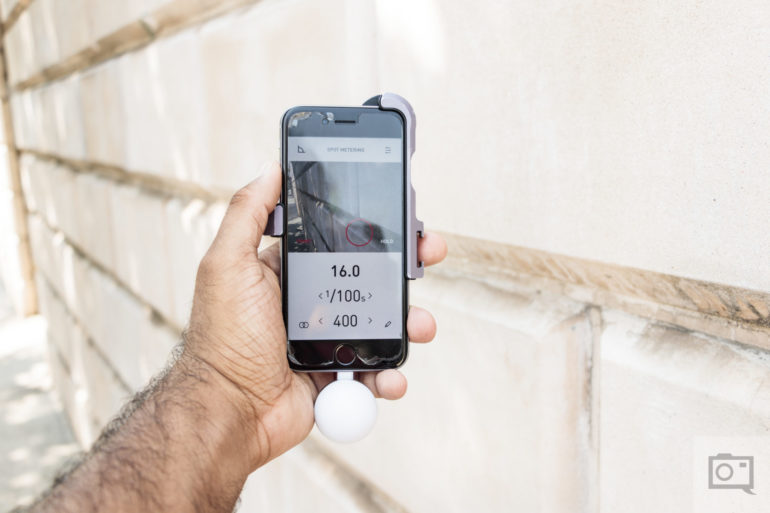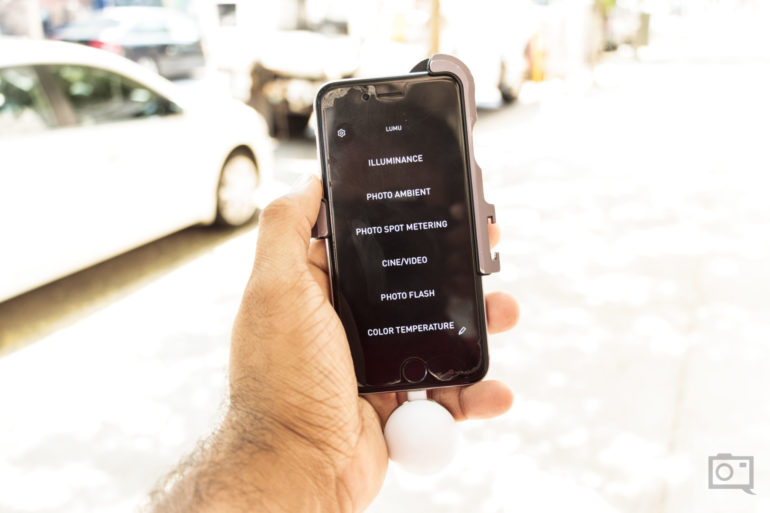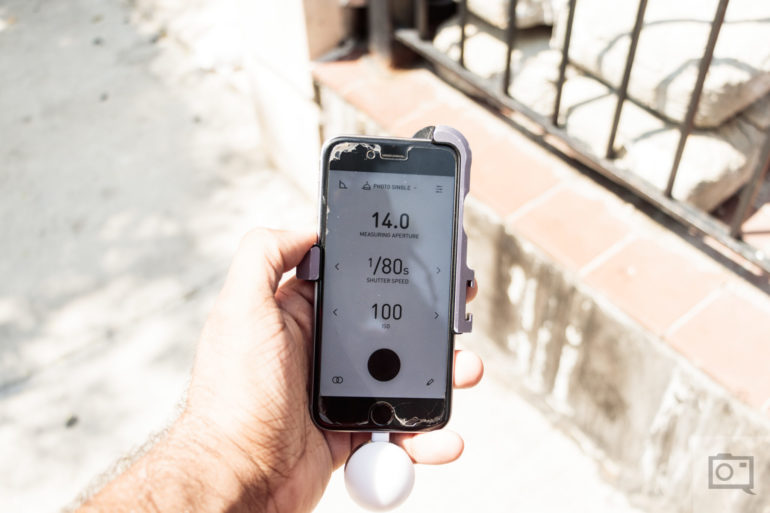For years and years, I always wondered why no one had any sort of flash enabled light meter available for the iPhone; but then Lumu went and got the Lumu Power Kickstarted. It may have taken quite a long time, but it’s finally out the door. The Lumu Power light meter is designed for the photographer that wants and needs to use a light meter but that doesn’t want to carry around an actual light meter. Instead, they want something small that they can tote around and use whenever they want or need. Plus it simply works with your iPhone. So why would you not want one?
To be fair, if you’re a photographer that uses your camera’s light meter and have no issues with it, you’re probably not the person that this review and product are targeting. The advantages of a handheld light meter are many. They’re often much better at determining color readings if you’re not one to use Auto White Balance (I shun auto white balance), shoot with film and a film camera that doesn’t have a light meter built in, shoot film with a film camera that has a light meter but the light meter is complete garbage, shoot cinema, etc. For the better part of five years I’ve been using handheld light meters and loved them. They’re much lighter and smaller to bring with you vs a digital camera to accompany your serious and often larger format film camera. But with the Lumu Power, they just became ridiculously small.
Before you even begin to read this review you should know one thing: the Lumu Power is revolutionary. It’s going to open the world of flash photography and film photography up to a whole new generation of photographers who couldn’t afford or justify the purchase of bigger light meters. I got to meet with the folks who created Lumu Power last year at Photokina. And now, I’m even more excited about the creation.
Pros and Cons
Pros
- Small attachment that can fit into your pocket or bag
- No need to bring your light meter around or have to replace the batteries for it
- Color readings
- Ambient Light readings
- Flash output readings are an absolute game changer for an iPhone based Light meter
- Fun to use just to experiment with and even to study how light of all colors affects a scene
- Comes in a nice, small case for you to tote around
Cons
- At one point I thought that it wasn’t reading flash output effectively until I realized that the light I was testing couldn’t go down in power output any lower. So it was user error on my part and the Lumu Power is pretty amazing.
- I mean, I guess at $299 you could say that that’s expensive but when you consider all the information that the Lumu Power can give you, then you know that that isn’t bad.
Tech Specs
Specs taken from the product page
Illuminance
- Measuring range: 0.15 – 250,000 lux
- Accuracy: +/- 3%
- Flat Diffuser, Cosine-type response
Other
- Power source: iOS device
- Materials: Housing: Stainless Steel, Diffusers: Polycarbonate Lexan
- Compatibility: iOS devices using Lightning connector, running iOS 8+
Exposure
- Measuring range: EV -4 to 20 at ISO 100
- Accuracy: +/- 0.1 EV
- Light receptor: fast-response Silicon photo diode, CIE spectral luminous efficiency
- Hemispherical Diffuser, Cardioid-type responses
Color (Temperature)
- Light receptor: True Color Sensor, CIE 1931 Color standard Human eye perception
- Sensitivity: Visible light
- Dynamic range: 1:1,000,000
- Accuracy: < 0.6 deltaE, Repeatability: < 0.2 deltaE
- Flat Diffuser, Cosine-type response
Ergonomics
Taken from our first impressions post
The Lumu Power is quite a bit larger than the original Lumu light meter. One side is a rounded dome-like area that looks similar to pretty much any dome you’d see on a more conventional light meter.
The other side is a flatter area designed not only for ergonomic reasons but also because it helps to discern colors in a scene. Like all light meter domes, it’s best to keep it as clean as possible. So Lumu also comes with a smallish case to place it in when not in use.
Lumu Power plugs right into the iPhone by using the lightning connector. This is perfect for iPhone 7 and iPhone 7 plus users.
Build Quality
For ease of understanding, here is the Lumu Power hooked up to my iPhone and an old Minolta Light meter. I can easily flip my phone upside down and use the light meter that way with the screen re-orienting itself accordingly. Considering that the heart of the Lumu Power is the little dome adapter I’d have to say that the build quality is very solid. With more standard light meters you can take the dome off if you wish. That isn’t an option with the Lumu Power.
Of course, the entire interface is touchscreen and app based.
Ease of Use
When you plug the Lumu Power into your phone, it recognizes the adapter and then prompts you to use it. When you confirm, then you’ll be happy to know that your phone will open up the Lumu light meter app automatically for you to use. That’s fantastic.

The Lumu Power’s main use for many people probably be flash metering. Indeed, it works really well. In fact, it’s very similar to many other systems. Just select the shutter speed you’re using, the ISO, place the meter in the spot where you want lit, press start on the app, pop the flash, and you’ll get your reading. If you wanted to pop something else quickly after that, you can for a few seconds. But otherwise, you’re going to need to press the start button again on the app’s screen to tell it to look for flash output. But if you know what aperture and shutter speed you want, then you can set the ISO. One parameter is always variable and measured but you set the other two.
During my testing time with the Lumu Power, I used it with both film and digital. For both systems it was perfectly fine and accurate providing that I knew how the film worked beforehand.
For me, that’s the biggest challenge and the Lumu Power nailed it right out of the box. To be fair, I knew this back at Photokina last year. But getting to try it in an independent space confirms what I saw on the tradeshow floor. One of the cooler things that the light meter does is give you the reading of the flash duration–which is huge if you’re trying to figure out how you can overpower the sun when shooting outside. For monolight users and strobist, this will be a huge help.
But besides ambient light measurement and flash output measurement, the Lumu Power has a number of other cool tricks up its sleeve. For example, it can be a color temperature reader too. Why would this be so important to you? Well for film photographers that don’t want to have to spend a whole lot of time fixing a scan or tinting in the dark room (like me) then getting the best color is very important. Most daylight film is balanced to 5500K. So in a situation like the one that I’m showing above I’m more or less set to shoot. What I see is what I’d get.
Notice the settings in the top right, you can modify those at will.
But in a situation like this, where the light is warmer I’d know that I’m getting a very warm image. That works well for portraiture if you’re one of those folks that loves the warm skin tones that can be delivered in a photo. For digital photographers this is also important because it can mean less editing in Lightroom or Capture One.
Trust me, there is absolutely nothing more satisfying than knowing that you have zero white balance correction to do with the photos that you’re creating.
The Lumu Power also has spot metering abilities that use your phone’s main camera to figure things out. Spot metering can work very well but in most situations I won’t use it. I basically use it when shooting heavily backlit portraiture.
Here’s what the app looks like and offers photographers. As you can tell, the free app and this little adapter can do quite a bit for you.
And because someone is most likely going to ask, ambient light meter reading is pretty accurate. I tried it with a Canon Rebel T7i that I had with me at the time and the Canon system was more or less on by +/- 1 stop. To be fair, I’m not often a fan of Canon’s own metering system. Sunny 16, however, would’ve told me to shoot this scene at 1/100th, ISO100 and f16. For those of you who know the Sunny 16 system, this is the standard base from where everything is modified. My reading would have otherwise been a half-stop off according to the Lumu Power.
Conclusions
Likes
- Everything
- There are firmware updates coming to the app that will let the Lumu Power do even more. Sort of like the Fujifilm mentality, that means in the long run that you’ll be getting basically a new light meter every time.
Dislikes
- Not a whole lot.
The Lumu Power was years in the making. Because I’ve been in constant communication with many of the creators, I’m aware of many of the challenges that they faced. But in the end, they got it done. The Lumu Power is a fantastic little peripheral that connects to your iPhone and uses the fantastic Lumu app to give you a whole lot of light reading power. If you’re a film photographer, a strobist or even a photographer that wants to learn and understand more about light and color, then this is the light meter for you.
I’m awaring the Lumu Power our Editor’s Choice award. It surely deserves the five out of five stars.


